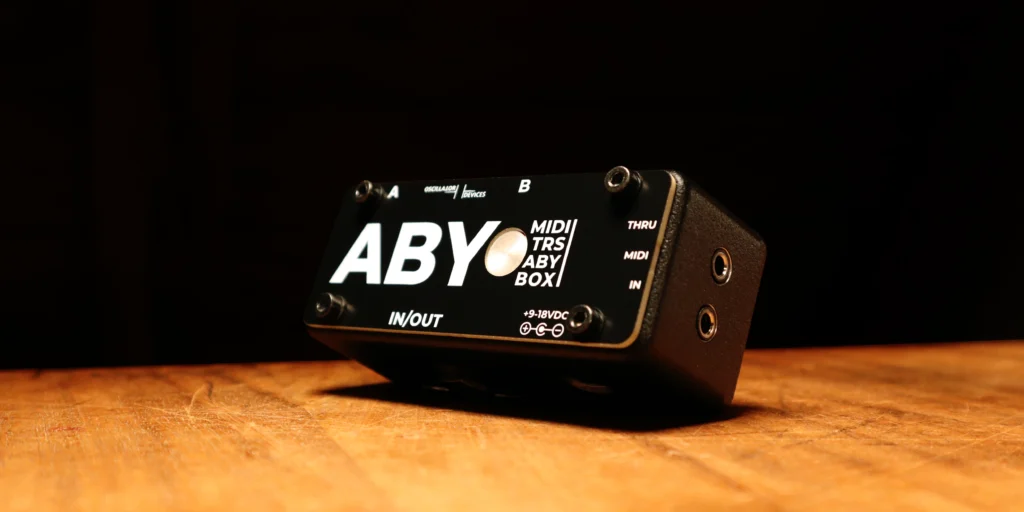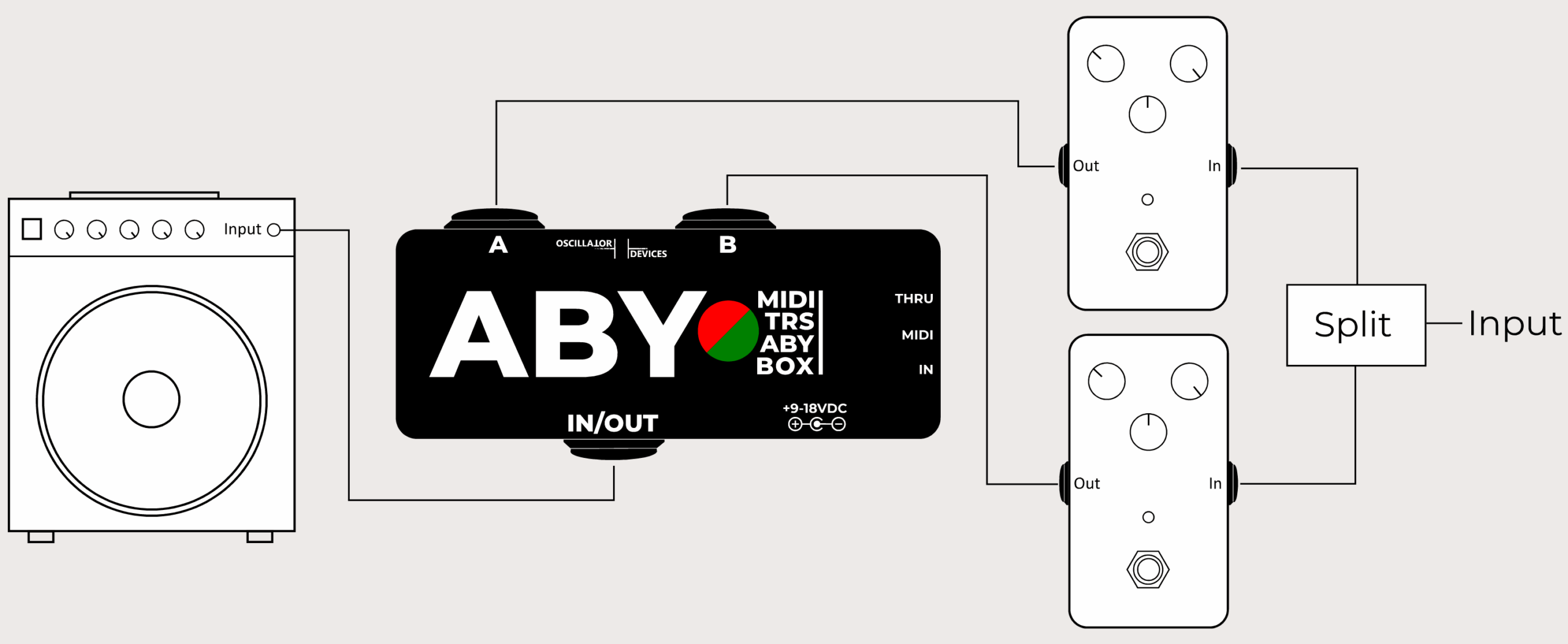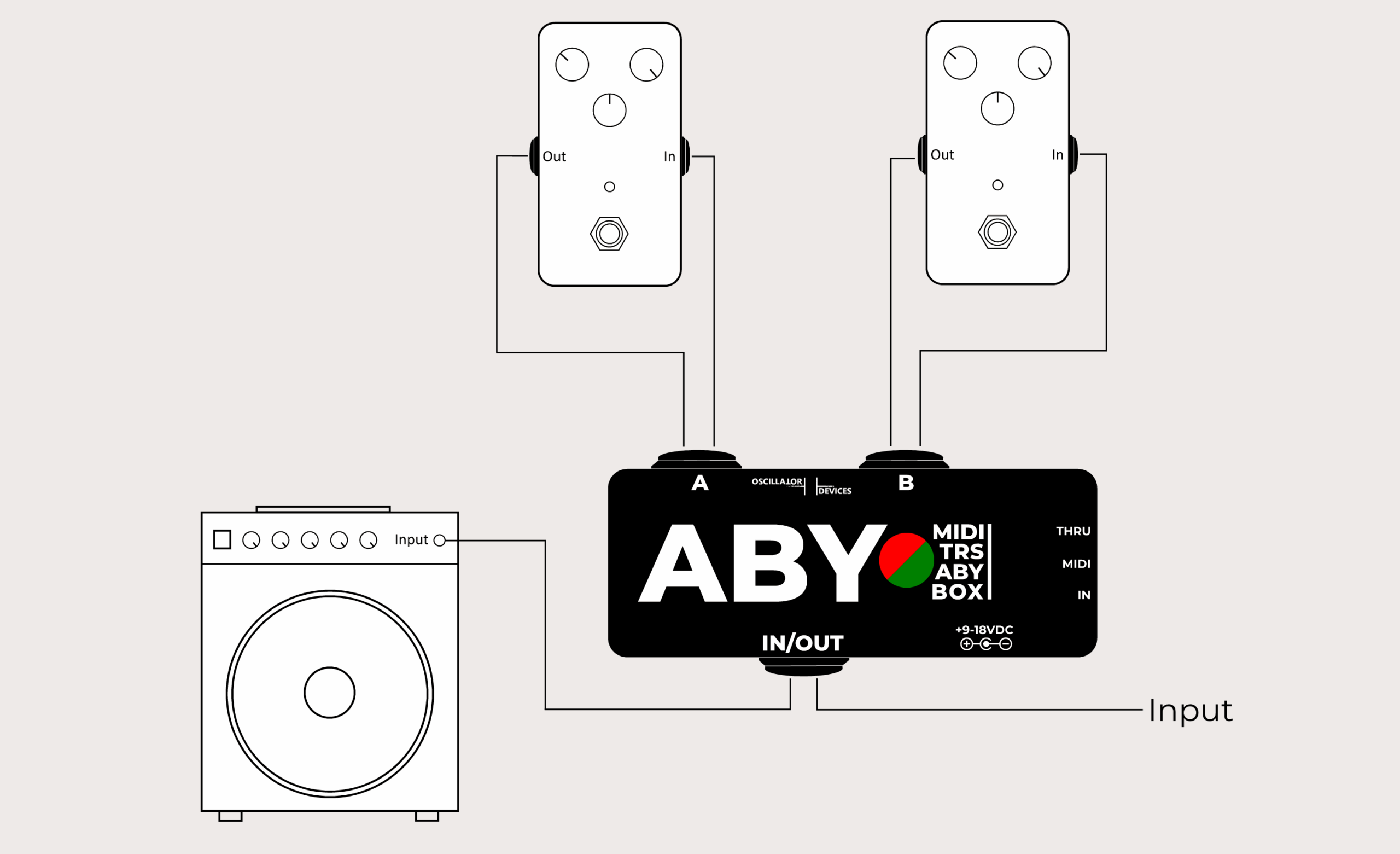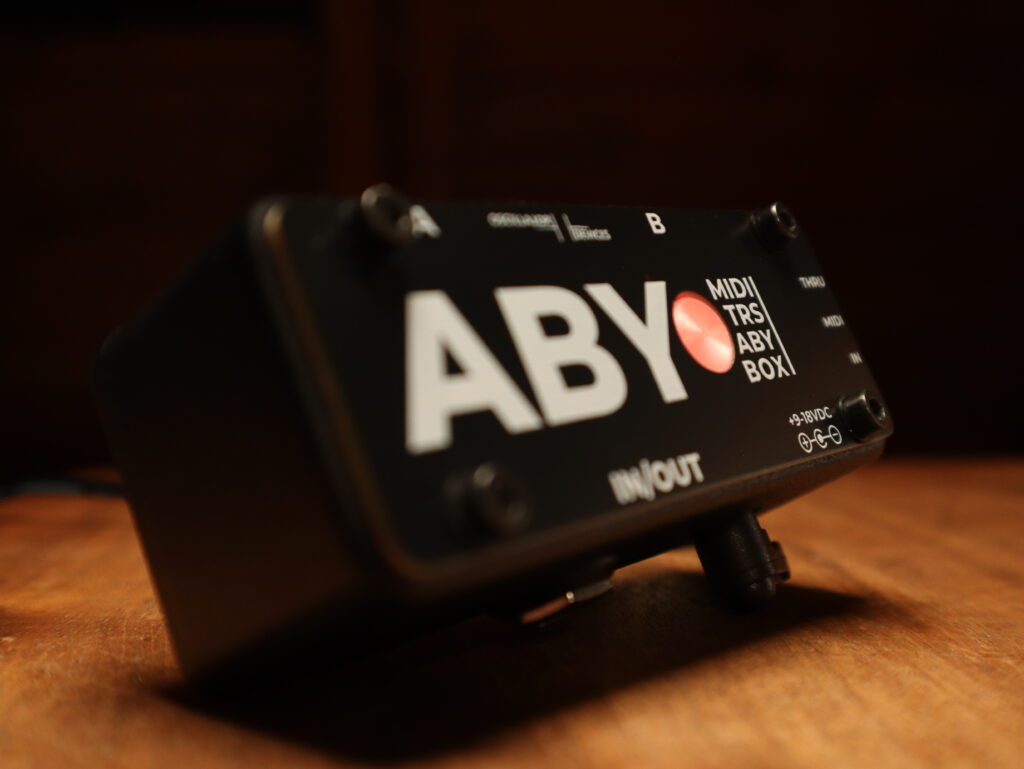The Oscillator Devices ABY is a bidirectional TRS MIDI ABY switch. That means it can be used both ways and it can be used with TRS plugs and stereo signals.
The ABY is true bypass, which means its signal path is passive. So, no buffers in the way, a straight relay based signal path.
Features:
- True bypass MIDI ABY box
- TRS support
- MIDI Control with MIDI In and MIDI Thru
- Control with CC messages or with PC and presets
- Very small footprint (93mm x 39mm) and only 32mm in height
- MIDI channel sharing through configurable CC messages
- Fully supported by the WebMIDI Interface
- Compatible with all MIDI 1.0 compliant controllers
- High-quality Neutrik sockets
- Developed and built by Oscillator Devices in Germany
ABWhat?!
What is an ABY box, anyways? Easy, it either switches one output between two inputs, or one input between two outputs. A, B and Y refers to the IN/OUT that can either be connected to A, B or both (Y). Because of its passive design, the Oscillator Devices ABY can do both.
Here are some examples of what you can do with it:
- Switch between two instruments
- Switch between two amps
- Switch between two effects chains
Let’s have a look at a few simple applications for a MIDI ABY box.
Switch Between Two Amps
You can use the ABY to switch between two outputs. This can be two amps, like in the picture below, or two modelers, IR loaders or anything else. When using the ABY with two amps, you probably need an additional line isolator/DI Box.
Switch Between two FX Chains
How to use the ABY to switch between two FX chains depends a bit on the application. In case of modern guitar FX, maybe even in stereo, the following setup will do the trick.
In this case, the Split can be passive, like a Y cable. With modern FX pedals with high input impedance this is no problem. But can I use it the other way around with the outputs connected? No, never directly connect the outputs of guitar pedals. That also means, that you should avoid activating both A and B at the same time.
But what if I have some old FX pedals? They might no have high input impedance and connecting the inputs would mess with the sound. In that case, you can make use of the TRS switching and switch both the input and the output.
In that case the input would be routed over tip and the output over ring. You’ll only need some additional Y cables (TRS -> 2 x TS) to make that happen. But be aware, that Y cables and TRS connections in general introduce a certain amount of crosstalk. You can not use this setup with high gain pedals. The crosstalk would feed parts of the output signal back to the input and above a certain amount of gain it leads to feedback.
ABY Stereo Switching
The ABY works with TRS plugs and can route stereo signals. Of course it can be used with TS cables and mono signals, too. But be aware, that the ABY can’t switch tip and ring independently. That means, that tip and ring are always connected to the same in/output.
Button Control
The button on the top is for easy setup and testing as well as for visual feedback. When it lights up green, A ist connected to IN/OUT. When it lights up red, B is connectes to IN/OUT. With both connected it lights up orange.
You can use it to cycle through all states (A -> B -> A+B -> Off) and set up the ABY how you need it. It also gives you access to presets. Finally, it gives you access to the Oscillator Devices MIDI channel setting scheme, which lets you set up the MIDI channel easily.
Presets
Do I really need presets for a simple application like that? Well, that depends on your setup. Years of experience with MIDI setups have shown us that no two are the same. There are MIDI controllers – for example – that can only send PC messages. Or some users have programmed presets for every song and only a single PC message is sent to set up all devices for that song. For that, you can setup the ABY for all 128 PC commands how you like it.
Setting up a preset is as easy as it can get. Set the ABY how you like it using the switch. Hold the switch until it flashes. Send the PC command to which you want the setting to be saved. Done. Or, if you have a MIDI interface on your PC, use the WebMIDI Interface to set up presets.
Commands
There are various CC commands to control the ABY, so you can use it like it fits your setup best. You can either set it to a certain state (A on + B off, A off + B on, A on + B on), enable, disable or toggle A or B, or you can cycle through the states.
It gets better. To share the MIDI channel with other devices, the CC commands can be changed. This is easily possible through our WebMIDI Interface.
MIDI Connection
The MIDI connections are assigned according to the official MIDI specification of MIDI TRS using MIDI TRS Type A, like pedals from Boss or Wampler. A 1/8″ (3.5 mm) stereo jack plug is used.

Documentation
| Document | Version | Download |
|---|---|---|
| User Manual | ABY 1.0 (May 2025) |






